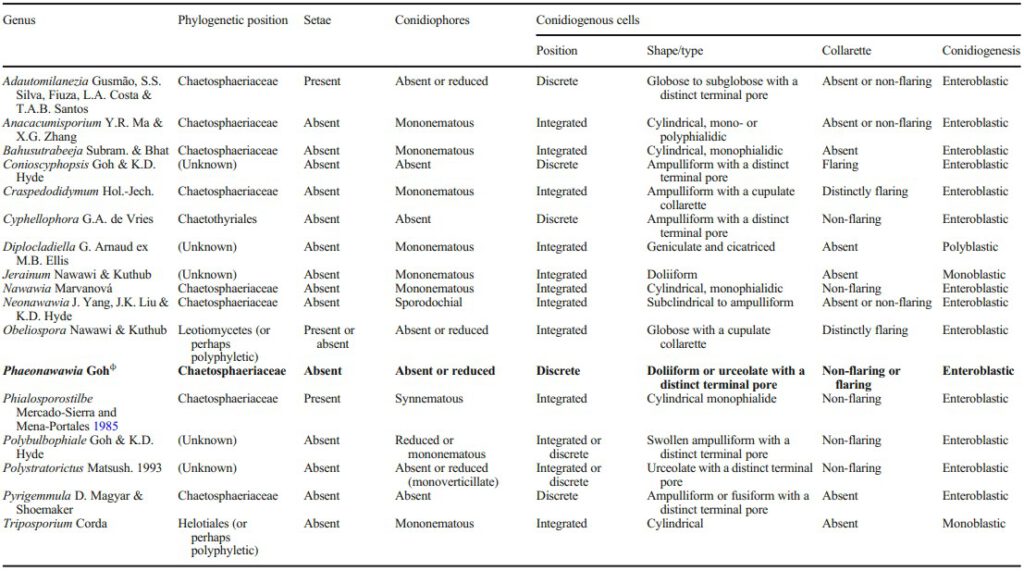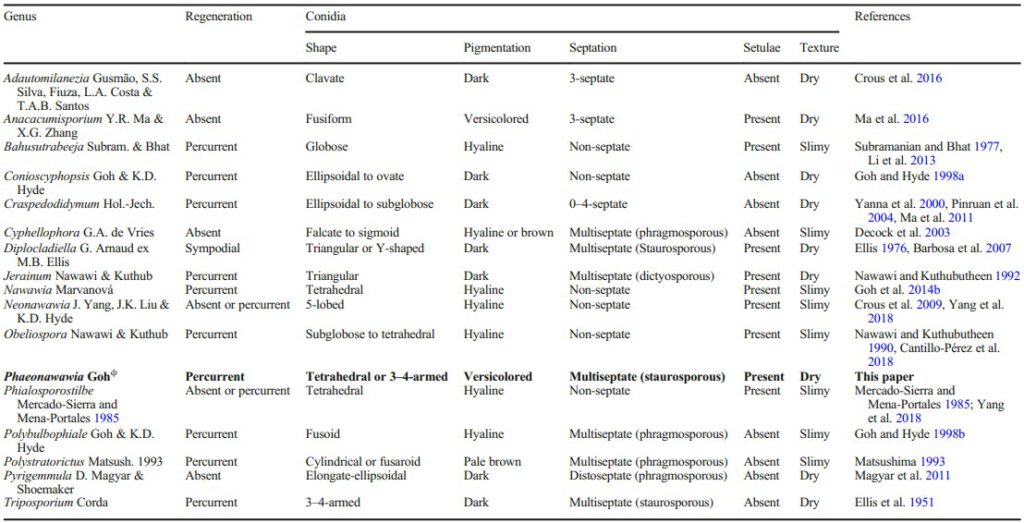Phaeonawawia Goh, in Goh, Ou & Kuo, Mycol. Progr. 20(3): 228 (2021)
MycoBank number: MB 836839; Index Fungorum number: IF 836839; Facesoffungi number: FoF14615;
Type species – Phaeonawawia diplocladielloidea Goh, J.H. Ou & C.H. Kuo
Etymology – From Greek, phaeo- (dark grey or dark-coloured), and the generic name Nawawia Marvanová, denotes that this fungus is similar to Nawawia but producing dematiaceous conidia.
Conidial fungi, hyphomycetous. Colonies on natural substratum effuse, brown. Mycelium partly superficial, partly immersed in the substratum, consisting of smooth, brown branched, septate hyphae. Conidiomata none. Setae and hyphopodia absent. Conidiophores absent or rudimentary in the form of a basal stalk under the single conidiogenous cell. Conidiogenous cells phialidic, discrete or integrated, sessile or incorporated terminally in the basal stalk, bulbose, doliiform or ampulliform, with a distinct, rimmed opening at the apex. Conidia enteroblastic, exogenous, solitary, dry, enclosed by a thick hyaline sheath, tetrahedral, staurosporous, arms multi-euseptate, dematiaceous, setulate. Conidial secession schizolytic.
Note – There are several hyphomycete genera which are similar to Phaeonawawia. These include genera that have a similar type of conidiogenesis, producing enteroblastic conidia from discrete bulbose or swollen phialides, such as Adautomilanezia, Obeliospora, Conioscyphopsis, Cyphellophora, Polybulbophiale, Polystratorictus, and Pyrigemmula. Examples of genera producing conidia from mononematous conidiophores with integrated phialidic conidiogenous cells include Anacacumisporium, Bahusutrabeeja, and Craspedodidymum. Genera that have setulate conidia include Nawawia, Neonawawia, Obeliospora, and Phialosporostilbe, whereas those producing dematiaceous staurospores are Diplocladiella, Jerainum, and Triposporium. To date, Phaeonawawia is the only known genus in the Chaetosphaeriaceae producing dry, multiseptate, dematiaceous, versicoloured stauroconidia from discrete bulbose phialides.
Table 2 Comparison of hyphomycete genera similar to Phaeonawawia

Table 2 (continued)

Species
